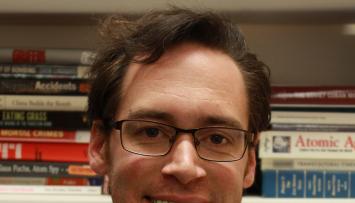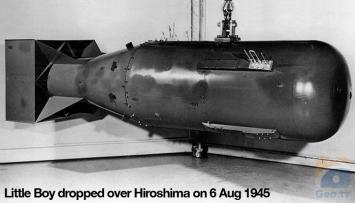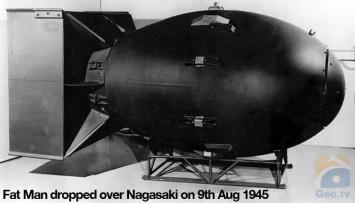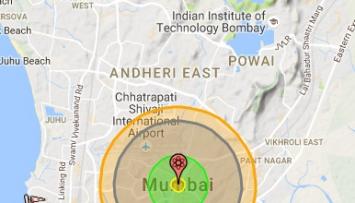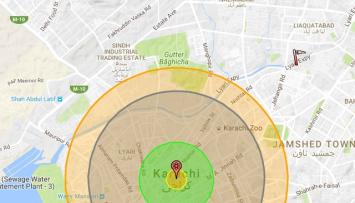Let’s drop a nuclear bomb…
The only two nuclear weapons ever used in war, the ‘Little Boy’ and ‘Fat Man’ when dropped on Hiroshima and Nagasaki claimed nearly a quarter million lives. With majority...
October 11, 2016
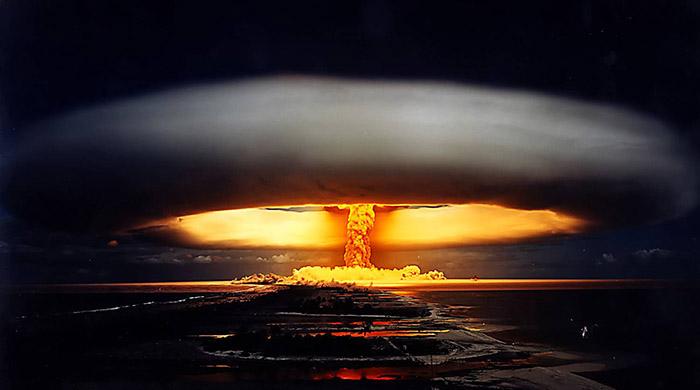
The only two nuclear weapons ever used in war, the ‘Little Boy’ and ‘Fat Man’ when dropped on Hiroshima and Nagasaki claimed nearly a quarter million lives. With majority of the deaths occurring on the first day, the remaining died due to the fallout effects, radiation sickness, burns and the compounded effects of war.
Over the last 71 years the world’s nuclear arsenal has grown, with the nine known nuclear armed states possessing over 10,000 nuclear warheads. All more powerful than the ‘Little Boy’ and ‘Fat Man’ that fell in August 1945.
Both the Little Boy and Fat Man were atomic bombs but the way they were set off and how the chain reaction for nuclear fission was triggered were different.
In the former, the chain reaction was triggered by firing a projectile of uranium-235 at a primary core of the same substance to start the reaction. The Fat Man had a plutonium-239 core and the chain reaction was triggered by detonating conventional explosives.
Today’s weapons are far more advanced than the Little Boy and Fat Man; much of the nuclear arsenal contains bombs 3,000 times stronger. While the bombs in 1945 caused a fission process resulting in the mammoth fallout, some of the present-day bombs, after the first stage, will create another chain reaction causing an even greater second explosion.
Do you want to drop the bomb?
No amount of numbers will bring about the realization needed to understand the risks and dangers and massive destruction that dropping a nuclear bomb will cause. What if you could drop a nuclear bomb of your choosing, on any city, just to see how many people would die?
Nuclear historian and Associate Professor for Science and Technology Studies at the Stevens Institute of Technology in New Jersery, Alex Wellerstein designed a Google Maps mash-up which allows you to do just that: Drop a nuclear bomb!!
The aim behind the Nuke Map, as it is called, is to fill the information gap that exists about nuclear weapons.
I tried it out. I bombed New Delhi with the most powerful nuclear bomb in Pakistan’s arsenal, a 45 kiloton device. Then I bombed Karachi with the most powerful bomb in India’s arsenal, a 60 kiloton warhead.
In the first strike, a single 45 kt bomb dropped on Mumbai resulted in 586,120 estimated fatalities with over 2,037,000 injured. In the second strike a 60 kt bomb was dropped over Karachi, 720,000 people died and over 1,850,000 people were injured.
Mumbai
The bomb over Mumbai created a fireball with a 280 meter radius. That is if the bomb is detonated 250 meters above the surface, known as an airburst. Radiation was felt over a 4-square-kilometer area. In the result of a higher airburst, most residential buildings in the approximately 20-square-kilometer area collapsed. Thermal radiation spread over an approximate 30-square-kilometer area, causing third-degree burns.
Karachi
The Indians have a more powerful bomb, but before getting excited over whose bomb is bigger, understand that in the case of a nuclear war countries with arsenals running into hundreds of war heads will most likely not fire just a single bomb. However, in this experiment I did drop a single 60 kiloton bomb over Karachi. The results, over 720,000 killed, over 1,865,000 injured. The fireball had a radius over 310 meters. Radiation spread over 4-square-kilometers. Residential buildings in 23-square-kilometer area collapsed, while people in an area almost 40-square-kilometers suffered third-degree burns.
The NUKEMAP
Speaking to Geo.tv Professor Wellerstein said, “the goal of NUKEMAP is to give people a tool for thinking about nuclear weapons. It's easy to tell people how they should think about these issues. But it's more compelling to give people a means of exploring them for themselves and coming to their own conclusions.”
The professor added, “NUKEMAP is meant to help people calibrate their understanding of nuclear weapons, in between the two common beliefs of ‘they aren't much bigger than conventional weapons’ and ‘they'll destroy the entire world instantly’.”
Speaking to The Independent last year, Wellerstein said, “When my students see that the first H-bomb destroys the whole metro region and there are millions of casualties, I get an involuntary audible gasp and I know I am hitting them right in the guts.” He went on to add, “Students today have almost no conception of what nuclear weapons are or what they can do, so I created the NUKEMAP to help them calibrate their fear so they can work out just how afraid we should be,” of nuclear bombs.
Based on mathematical models distributed by the US government 50 years ago, the NUKEMAP uses an idealized model which is not the most accurate because it is not using the latest weather data available.
So go ahead and try out the NUKEMAP, go and drop a few bombs and see for yourself the devastation it will bring and why it should never be an option.
Ovais Jafar is a Multimedia Journalist, he tweets as @ovaisjafar
